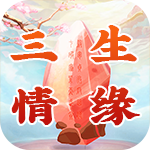1. 求對生活認真的句子
1、人生如一串風鈴,有風的時候很熱鬧,無風的時候很寧靜。
朋友說,喜歡開朗活潑的晴兒,晴兒知道有風的日子,陽光總是燦爛得溫暖且優雅的,故而會有個快樂靈活的晴兒。但是,晴兒和所有人一樣,也享受無風的時光,靜靜的不多說一句話,只沉醉在唯美字符里找自己。
不過,晴兒一直記得對我不離不棄的朋友。2、是不是每個人都會有那麼一刻是不想說話、不想寫字、不想工作的?放開一切,只想靜靜地坐著,卻也不喝水、不看風景、不思浮沉,只是那麼靜、靜靜地呆坐在某一個心靈缺口的地方,笑著紅塵,也讓紅塵笑看自己。
或許是吧,隨著時間的慢慢推移,曾經濃的淡了、淡的便是更淡了。3、昨天,起伏不休的喧囂如今已云淡風輕。
看不到浮躁的昨天,隨著夕陽的西去此刻剩下清冷的寧靜。夜幕輕輕地將夜的幽情灑在心上,一面品嘗孤寂,一面品讀安詳,久了,便也察覺到生活原來還有另一種意義。
每天都有那麼多人在嘆息人生的不如意,其實,那些東西能停留多久呢?開心一些吧,沒有過不去的的坎…4、如果你的工作,機器也可以做。那總有一天,你也要變成機器。
5、人在職場須記牢:有多勤奮并不重要,為什麼勤奮最重要。喜歡誰并不重要,誰對你有用最重要。
理想很重要,但比理想更要的是生存。6、喜歡聽靜靜的音樂,喜歡讀淡淡的文字,喜歡想美美的未來,喜歡交純純的朋友……慢慢地,心境上了新的層次,在有限的人生閱歷中品到了無盡的幸福和美滿。
班長說,他的要求并不高。可他條件是那麼的好。
我笑著答:要求不高,簡簡單單才是幸福。都一樣吧?喜歡返璞歸真的禪意生活,因簡單而擁有幸福……。
2. 描寫牡丹花和古建筑在一起的句子
Tree
peonies have been widely planted in the Imperial Garden since the
Qing Dynasty because the tree peony was then the state flower.
One
feature of the garden is the way that the dignified and graceful
peonies and the resplendent and magnificent ancient buildings
contrast with and complement each other.
Another is the natural and
harmonious arrangement of flowers planted in parterres or with
mountainous rocks and sword-shaped stones.
3. 搜一篇寫一個人的作文
今天我走在路上,看見空中飛著那麼多蜻蜓…… 那麼多蜻蜓,我以前只在奶奶家門前的場上還有我高中校園里的石頭橋上看見過這麼多蜻蜓……你看他們翅膀透明,在空中停著,又悠哉著飛走了。
我不知道他們在什麼,他們飛來飛去的自在模樣總是令我心生羨慕。 當我還是個邪惡又無畏的孩子的時候,曾經學哥哥們捕捉這些大眼睛的精靈,然后捏在手里當飛機玩,哈呵。
最后掐死,看見他們干燥的身體里什麼也沒有,血也沒有…… 后來長到十五六歲,學會了傷感……它們輕盈的模樣開始變成關于某些人某些事的記憶封面。是的,如今我看見你們,我感到傷感…… 騎著單車,在寢室和辦公室之間穿梭往來,我感到有點孤單阿啊啊孤單 孤單就是這樣吧,一個人走路,神情模糊……一個人呆著,找事做……一個人吃飯,不吃飯也沒有人會管…… 找到一些張楚的歌來聽,他的歌味道這麼特別,就像我現在正在聽的這首《上蒼保佑吃飽了的人民》 ……這樣的音樂,竟讓我開始想念不久前的那些日子,晴兒和我趴床上畫畫,等灰和熊熊回來…… 灰年齡最大長得人模人樣卻又最脆弱對人依賴, 漂亮的晴兒笑容甜美,說話永遠是溫軟細語,身體細長,手腕上有褐色的傷痕是花兒綻放的形狀……無煙酒嗜好,卻為了灰的隱瞞酒醉到虛脫 灰和晴兒的故事,幾多唏噓,終于還是不知道會使怎樣的結局 我是滿心祝福他們的, 可是祝福又什麼用呢? 兩個世界的人,如果因意外忽然相遇并愛上,這是美麗的開始還是悲劇的開始? 不知道他們現在在什麼地方?是在兩個人一起?還是一個人孤單? 那天我又路過那間小屋,灰給晴兒的生日驚喜,他把那旅館的小屋子裝的像個家的模樣……。
4. 描寫孫中山的英語句子
Sun Yat-sen (November 12, 1866 - March 12, 1925) was a Chinese revolutionary leader and statesman. He had a significant influence in the overthrow of the Qing Dynasty and establishment of the Republic of China. A founder of the Kuomintang, Sun was the first provisional president of the Republic of China in 1912 and as de facto leader from 1923 to 1925. He developed a political philosophy known as the Three Principles of the People. Sun is uniquely admired by almost all Chinese. Yet, his life was one of constant struggle and frequent exile as few of his visions for his country materialized.。
5. 描寫祖國的英語句子
中國地域遼闊,960萬平方公里的土地上高山聳峙,大河奔流,湖泊如境,丘陵起伏,平原無垠,盆地肥沃。
China has an immense territory totaling 9.6 million square kilometers. On this vast area of land, there are high mountains, long rivers, undulating hills, boundless plains and fertile basins. 中國的遼闊大地像是一個碩大的四級臺階,由西向東,一階一階逐級下降。最高的臺階是青藏高原,平均海拔4000米左右,是著名的"世界屋脊"。
上面分布著昆侖山、岡底斯山和喜馬拉雅山等雄偉的高山冰川。 China's surface slopes down from west to east like a four-step staircase. The top of the staircase is the Qinghai-Tibet Plateau, with an average elevation of more than 4,000 meters and known as "the Roof of the World". The Qinghai-Tibet Plateau is composed of rows of snow-capped peaks and glaciers. The major mountain ranges are the Kunlun, the Gangdise and the Himalayas. 第二個臺階是由內蒙古高原、黃土高原、云貴高原和塔里木盆地、準噶爾盆地、四川盆地構成,平均海拔1000米左右。
The second steppe consists of the Inner Mongolia, loess and Yunnan-Guizhou plateaus, and the Tarim, Junggar and Sichuan basins, with an average attitude of 1,000 meters. 第三個臺階則是由大興安嶺、太行山、巫山和雪峰山向東一直到達海岸,地勢下降到海拔500米到1000米以下。這一級上分布著東北平原、華北平原、長江中下游平原。
在這些平原的邊緣鑲嵌著低山和丘陵。 The third steppe, about 500 - 1,000 meters in elevation, begins at the line from the Greater Hinggan, Taihang, Wushan and Xuefeng mountain ranges eastward to the seacoast. Here, running from north to south are the Northeast Plain, the North China Plain and the Middle-lower Yangtze Plain. Interspersed amongst the plains are hills and foothills. 第四個臺階是最東邊的大陸架淺海區,這里水深不足200米,堆積著河流入海帶來的大量泥沙。
To the east of the third steppe, the shallow water of the continental shelf, an extension of the land into the ocean, forms the forth steppe of the staircase. The depth of the water here is less than 200 meters filled with large quantities of mud and sand carried into the sea by rivers. Brief Introduction to China Location The People Republic of China is situated in eastern Asia on the western shore of the Pacific Ocean, with an area of 9.6 million square kilometers. China's continental coastline extends for about 18,000 kilometers, and its vast sea surface is studded with more than 5,000 islands, of which Taiwan and Hainan are the largest. Land Formation and Rivers China's land drops off in escarpments eastward to the ocean, letting in humid air current and leading many rivers eastward. Among the rivers totaling 220,000 kilometers in length in China, the Changjiang (Yangtze) and the Huanghe (Yellow) are world known. China has beautiful scenery, with mountains and ranges, highlands, plains, basins, and hills. The highlands and hill regions account for 65 percent of the country's total land mass, and there are more than 2,000 lakes. The highest mountain peak is Qomolangma (Everest), the highest in the world, 8,848 meters above sea level; the lowest point is the Turpan Basin, 154 meters below sea level. Climate China is characterized by a continental climate. The latitude spans nearly 50 degrees. The greater part of the Chinese territory is situated in the Temperate Zone, its southern part in the tropical and subtropical zones, and its northern part near the Frigid Zone. Temperatures differ therefore rather strikingly across the country. The northern part of Heilongjiang Province has long winters but no summers; while the Hainan Island has long summers but no winters. The Huaihe River valley is marked by distinctive seasonal changes, but it is spring all year round in the south of the Yunnan-Guizhou Plateau. In the northwest hinterland, the temperature changes dramatically. China high tundra zone is situated in the Qinghai-Tibet, where the temperature is low in all four seasons. Some desert areas are dry all year round. Resources China abounds in natural resources. It leads the world in many proven mineral deposits; No country in the world boasts more wildlife than China, many of which are native to China, such as giant panda, snub-nosed golden monkey, and Chinese alligator; China's dawn redwood and Cathaya argyrophylla are known as the living fossils of ancient plants. To protect the nation's native animals and plants, especially the endangered species, China has established more than 700 nature reserves. History China, with a recorded history of 5,000 years, is one of the world's earliest civilizations. In the 21st century B.C., China entered slave 。
6. 形容農村美環境的詞語有哪些
1. 山清水秀:shān qīng shuǐ xiù
解釋:山山水水十分清幽秀麗,形容風景優美
2. 名山大川:míng shān dà chuān
解釋:泛指有名的高山和源遠流長的大河。
3. 清風徐來:qing feng xu lai
解釋:描寫水面微風吹來的風景。
4. 荒草萋萋:huāng cǎo qī qī
解釋:形容雜草叢生的樣子
5. 炊煙裊裊 :chuī yān niǎo niǎo
解釋:人們做飯時徐徐輕煙回旋上升,隨風而逝的景象,也指搖曳貌,飄動貌,也形容香氣散發。
6. 山明水秀: shān míng shuǐ xiù
解釋:山光明媚,水色秀麗。形容風景優美。
7. 鳥語花香:niǎo yǔ huā xiāng
解釋:鳥叫得好聽,花開得噴香。形容春天的美好景象。
8. 山光水色:shān guāng shuǐ sè
解釋:水波泛出秀色,山上景物明凈。形容山水景色秀麗。
知識延展:
阡陌縱橫 :qiān mò zòng héng
解釋:指田地間小路縱橫交錯, 形容田園的繁盛。
來源:詞語源自井田制,井田制就是把耕地劃分為一定面積的方田,周圍有經界,中間有水溝,阡陌縱橫,像一個井字。
近義詞:阡陌交通



















